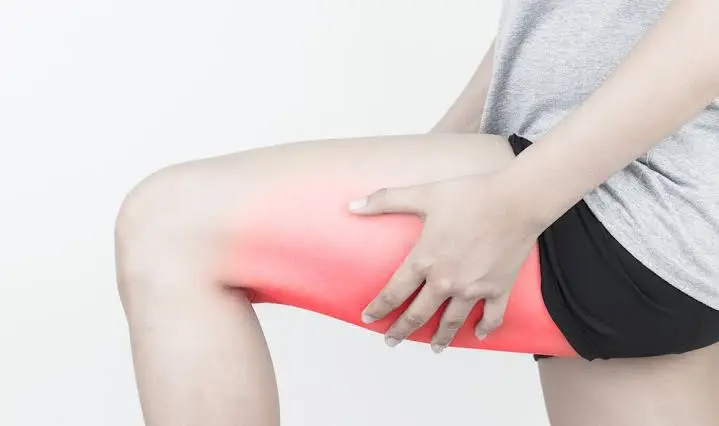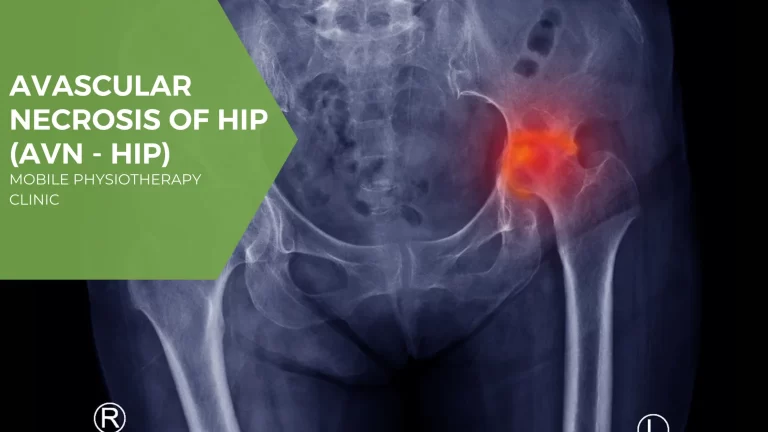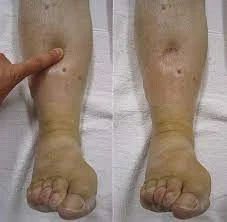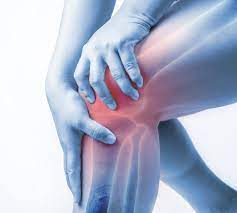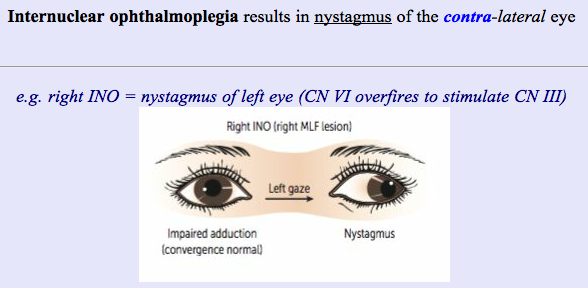Hamstring Muscle Pain
Table of Contents
Overview
Hamstring muscle pain, often felt as a sharp or persistent ache along the back of the thigh is a common issue for both athletes and the general population. This discomfort arises from strain or injury to the hamstring muscles, which are a group of three muscles running along the back of the thigh that enable bending of the knee and hip movement.
Hamstring pain can be triggered by various activities, from sports that involve sprinting or quick stops to prolonged sitting or improper stretching.
Understanding the causes, symptoms, and prevention strategies for hamstring pain is essential to maintaining mobility and overall leg health.
Causes of Hamstring Pain:
When a muscle lengthens during contraction or shortening, strains and tears occur. They can also occur when a muscle is overextended or under rapid stress.
An ideal environment for injury is created by all of this muscular lengthening and stress. Anything from an abrupt ache to a popping or cracking sensation in your leg is possible. There may be soreness in your hamstring and perhaps bruises where the damage occurred.
A hamstring strain is caused by a number of risk factors:
- Exercising with tight muscles: It’s possible that athletes with extremely tight muscles are more prone to injury.
- Muscle imbalances: where some muscles are more powerful than others.
- Poor conditioning: The muscles will be less able to handle the demands of specific sports or workouts if they are weak.
- Muscle fatigue: worn-out muscles are less able to absorb energy.
People who engage in the following activities frequently experience hamstring strain:
- Football,
- Soccer,
- Basketball,
- Tennis,
- Running,
- Sprinting,
- Other track
- Field competitions
Additionally, older athletes who walk as their main workout are more vulnerable. Teenagers with developing bodies are also affected. Muscles and bones don’t necessarily grow at the same pace. This implies that the muscles are susceptible to ripping from any force or stress, such as a leap or contact.
Symptoms of Hamstring Pain:
- The back of the thigh may be uncomfortable or painful, and it can range in intensity.
- bruising or swelling in more extreme situations.
- stiffness or restricted movement, especially when bending at the hip or extending the leg.
- Excruciating pain when sprinting, leaping, or making abrupt motions.
- weakness in the muscles or trouble walking, particularly if the damage is more severe.
Treatment of Hamstring Pain:
Pain relief:
To avoid further injury, stop what you’re doing if your hamstrings start to hurt. The acronym RICE may be familiar to you. It could hasten your recovery.
RICE is a term for:
- Rest: Steer clear of activities that might make your injury worse. This might entail using crutches or another mobility device, or it could entail completely resting.
- Ice
- compression: around reduce swelling and mobility, think about applying an elastic bandage around your thigh.
- elevation: To reduce swelling, try to keep your leg elevated on a cushion.
Your hamstring injury pain may be lessened with over-the-counter pain relievers. For temporary relief, oral nonsteroidal anti-inflammatory medicines (NSAIDs) such as ibuprofen (Motrin, Aleve) or another over-the-counter pain reliever like acetaminophen (Tylenol) may be helpful. Additionally, topical NSAID gels or creams can reduce discomfort.
Using a foam roller to offer myofascial release to your hamstrings is an additional pain-relieving alternative. To massage the muscles, position the roller just above the rear of your knee and roll it upward in the direction of blood flow. Your pain may also be relieved by a professional sports massage.
The extent of your strain will determine how quickly you recuperate. Within a few days, a weak strain, sometimes known as a “grade 1” strain, cures readily.
For immobilization therapy, your doctor could occasionally advise you to wear a splint. Your leg will remain in a neutral posture as a result, allowing it to rest and heal completely.
Once your edema has subsided, you may also consider physical therapy (PT). In physical therapy, you will perform several exercises designed to increase the strength, flexibility, and range of motion of your muscles.
If you have had a tendon avulsion, surgery can be necessary to repair the muscle. When the tendon separates from the bone and pulls the bone with it, this is known as an avulsion injury.
Before starting a physical therapy program, you might need to wear crutches or a brace for a while after you’re recovered. It might take three to six months for you to recuperate from surgery.
Prevention
Not every hamstring strain is avoidable. You could be in a greater risk category, such as a teenager or older adult, or you might get an injury from an unexpected collision. However, you may be able to reduce your risk of hamstring strains by doing frequent stretching and strengthening exercises. For specific workout recommendations that could be most effective for your activity, ask your coach or doctor.
Here are a few common preventative tips:
- Before exercising or participating in sports, warm up, and then cool down.
- Maintaining your muscular and cardiovascular condition requires frequent exercise. By doing this, you can assist yourself avoid fatigue-related injuries.
- Include time for muscular strengthening and stretching in your weekly workout regimen. By doing this, you can assist avoid injury-causing musculoskeletal imbalances.
- Give your body enough recovery by taking days off or scheduling easy days in between really taxing workouts.
- To get your hamstring muscles ready for the kinds of pressures that might cause injury, try to include speed work in your regimen.
Conclusion
To sum up, hamstring discomfort is a common problem that is frequently brought on by things like muscular strain, overuse, improper warm-up, or strength imbalances. Pain, swelling, stiffness, and trouble moving the leg are some of the symptoms, which can vary from little discomfort to serious damage.
R.I.C.E. (rest, ice, compression, and elevation). After the discomfort has subsided, progressive stretching and strengthening activities are performed. Proper warm-ups, consistent stretching, quadriceps and hamstring strengthening, and avoiding overtraining are the mainstays of prevention.
More serious injuries or chronic pain may need expert diagnosis and physical therapy to guarantee appropriate healing and prevent recurrence, even though the majority of cases may be properly handled with self-care. It is advised to seek medical assistance if the discomfort intensifies or doesn’t go away.
FAQs
The back of the thigh usually hurts suddenly and sharply when you have a hamstring strain. Tenderness and swelling often appear after a few hours. The rear of the leg may have bruises or a change in skin tone.
Repetitive strain on the tendons at the rear of your thigh is typically the cause of hamstring tendonitis. The tendon fibers may become inflamed and irritated with excessive usage.
Easy workouts prevent scarring or stiffness in the hamstrings. Increasing activity with low-stress activities, such as walking or cycling, aids in strength restoration as the hamstring heals.
Non-steroidal anti-inflammatory medication (NSAID) creams or gels or regular painkillers like paracetamol may work as well. Oral NSAIDs, such ibuprofen pills, can also help lower swelling and inflammation when used for a brief period of time.
Within a few days, some relatively minor hamstring strains can go away. However, the majority of injuries require weeks or months to heal completely. I am frequently asked by patients who have hamstring injuries why the recovery process is so sluggish.
vitamin D. Although the data is inconclusive, some medical professionals and scientists believe that muscular aches and pains might be caused by a deficiency in vitamin D. According to recent studies, a severe vitamin D deficit may cause muscular weakness and loss of muscle mass.
For hamstring discomfort, which affects the back of the thigh, sleeping with the knee extended rather than bent is the ideal posture.
An excruciating hamstring injury is more likely to occur in athletes and other people who run, climb, jump, or lunge a lot. Rest, ice, compression, elevation, and mild stretching are all part of the treatment, which prepares the patient for simple workouts. The majority of therapies are doable at home.
To ease discomfort and minimize swelling, use ice packs many times throughout the day. To reduce swelling, use a compression bandage or put on compression shorts to the wounded region.
Alter your sitting posture; it may assist to tilt your pelvis back or droop a little to put more weight on your thighs or buttocks. By lessening hip flexion, raising the chair’s height may also be beneficial.
References:
- Marcin, A. (2020, April 30). What causes hamstring pain and how’s it treated? Healthline. https://www.healthline.com/health/hamstring-pain
- Hamstring Strain (for Teens). (n.d.). https://kidshealth.org/en/teens/hamstring-strain.html

